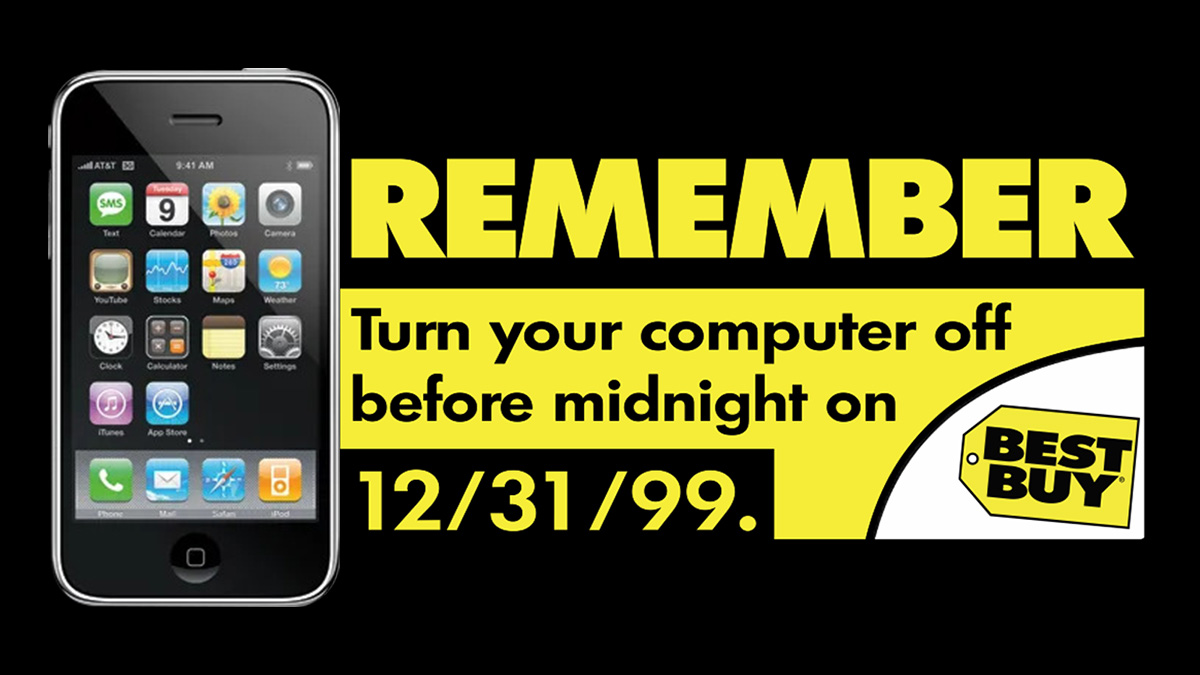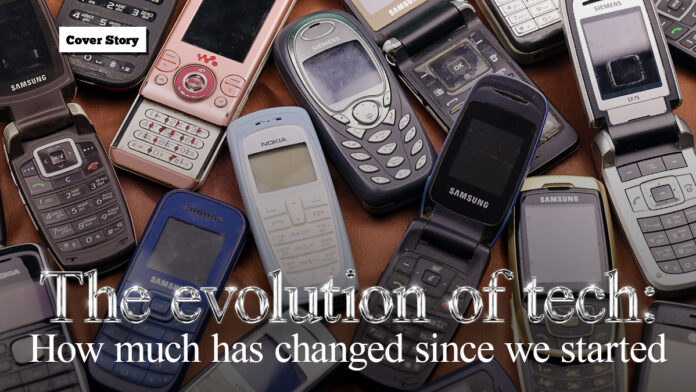Gadgets Magazine is turning 25 this year. Since we started in 1999, we have seen how much tech has changed. In just 25 years, we come so far; mobile phones have rapidly developed, laptops and computers have become smaller yet more powerful and, finally, the internet, from its infancy, has taken over most aspects of our lives.
As we celebrate our 25th anniversary, we look back on some of the major tech innovations that have changed our lives over the last 25 years.
Cutting the cord: How the mobile phone took over

The late 1990s and early 2000s were a great decade for mobile phones. Mobile phone manufacturers began the race to create a truly portable device. The 1990s saw a departure from the bulky Dynatacs of the 1980s (those massive phones from Motorola).
It was during the 1990s when brands like Nokia and Motorola stepped up their game, introducing smaller devices. Nokia delivered hits like the Nokia 1011 and Nokia 9000 Communicator. Motorola leveraged its mobile development to come out with the Motorola Startac, the first clamshell mobile phone that was the predecessor to their iconic Razr series. The 1990s also gave us the first Blackberry devices in the form of the RIM 850 and 857. Finally, towards the end of the millennium, we got colored display mobile phones, courtesy of the Siemens S10.
The 2000s intensified the rapid innovations in mobile connectivity. The decade gave us some of the most iconic mobile phones, such as the Nokia 3310 launched in 2000. In the same year, we saw the first commercially available camera phone in the form of the Sharp J-SH04. There was also the now iconic Motorola RAZR V3 (ironically, the V3 was actually the first version), which set the standard on what a flip phone should be. Later in the decade, Steve Jobs unveiled the first iPhone in 2007, which totally disrupted the mobile phone landscape.
While the iPhone’s initial launch was nothing to write home about, the subsequent launch of the App Store changed the story. The App Store turned the regular mobile phone into a smartphone, a phone that can do it all. This was soon followed by the first Android device, also with its version of an app store initially called the Android Market, now the Google Play store.
It’s worth noting that the rapid evolution of broadband technology played a similarly crucial role in transforming the mobile phone. The 2000s saw the arrival of 3G and, with it, an exponentially larger data transfer capacity. 3G enabled us to access the internet on our mobile phones, and it allowed us to stay constantly connected even when we were on the go.
The 2010s would be the start of the development of the modern smartphone. The arrival of the iPhone and Android sent shockwaves across the mobile world. Another player entered the race in the 2010s — Microsoft, with the launch of their now infamous Windows phones. Windows Phones initially had the potential to be a phone for the future, as Microsoft, after all, had made hit after hit with their PC OS.
Early Windows Phones had all the makings of a winner; they initially partnered and eventually bought Nokia, which was already miles ahead of everyone. They had good software at the beginning and even better hardware. The Nokia Lumia series essentially sparked off the smartphone camera war, and it was leaps and bounds ahead of its competitors. The Lumia 1020 had one of the best cameras on a phone ever. Unfortunately, a few years later, Microsoft sold Nokia and killed the Windows Phone project.
After the death of the Windows phone, what remained clear was that the world of mobile phones was going to be dominated by either Apple or Android. The app ecosystem from the two was further boosted by the arrival of 4G, allowing for faster connection speeds and larger data transfer of up to 1 GB/s. This opened the door to HD video calls on your device, streaming videos and movies, and the start of competitive mobile esports.
The transition from the 2010s to the 2020s was another pivotal era. Late 2019 saw 5G adoption around the world. 5G allowed users to reach speeds of up to 10 GB/s. The smartphone became a companion to many, a necessity for some. App-based systems started to slow as many tried to expand their functions to become super apps able to do it all.
In the last couple of years, we’ve seen a new trend that could be changing smartphones – AI. Artificial intelligence has been in smartphones since its early days in the 2010s. Now, faster processors are allowing more powerful Large Language Model (LLM) AIs to make your smartphone smarter. Both Google and Apple have their own form of LLM integrated within their new devices. That said, it’s still too early to know if AI will dramatically impact the smartphone world.
Distant but connected: How the internet and computing reshaped our world

The mobile phone started a revolution in how we live. The arrival of 3G in the early 2000s allowed us to access the internet on the go. Ironically, at that time, many Filipino households did not have access to the internet and were unwilling to pay big bucks just to use a mobile data connection.
Back then, there was no major use for the internet, and it was hard to imagine that we would become a society that is heavily reliant on the internet. Now, most of our work and lives depend on structures that use the internet to communicate with one another. In fact, in the late 1990s, no one knew if there was going to be an internet to speak of by the year 2000.
Just before the new millennium, there was a fear that the computer could not handle the shift to the millennium as they were not programmed to determine dates beyond December 31, 1999. The Y2K bug stoked fears that the world would be plunged into chaos if computers and software were not quickly updated. Fortunately, or unfortunately, for the countries that spent millions, December 31, 1999, came and went, and the clock struck midnight on January 1, 2000, and nothing happened.
What did happen in just a few months’ time was the dot-com bubble. This stock market bubble grew in the 1990s as startups and venture capitalists saw massive potential to make money via the Internet. Amazon.com was one such company that leveraged the internet to sell books; it would also be one of the few that survived the bubble. Most internet startups then were online shops, online publications, and portals. When the bubble burst in March 2000, many did not survive, and it may have set ecommerce back by a few years.
The dot-com bubble did help in a way. When the bubble grew, there was a heavy investment in telecommunications. This would lead to more homes worldwide to connect to the internet. It also gave us a semblance of what the modern internet would look like as companies like Google found investors during the growth of the bubble, and Amazon and eBay would set the standard on e-commerce while eBay’s subsidiary PayPal changed finance as we know it today.
The 2000s also saw the internet transform how we connect with one another. Instant messaging, like AOL, allowed us to talk despite the distance. Later on, services like Skype entered the fold and gave us video calls, turning simple texts into meaningful real-life conversations. The early 2000s also gave us social media, as Friendster and MySpace allowed us to share content about our lives with a select group of friends. Eventually, Facebook redefined what social media could be as it amassed the biggest user base and started a new trend in connections.
Speaking of new connections, the 2000s also gave rise to the adoption of Wi-Fi connectivity. During this period, Wi-Fi became a standard for wireless network connectivity. There was also Bluetooth for transferring data but on a smaller scale than Wi-Fi.
The 2010s marked a massive shift. Global internet access blew up thanks to more affordable DSL and Broadband connections. Later in the decade, new Fiber Optics development allowed for longer stretches of cable and faster options. Google further sparked development by creating Google Fiber, its own fiber internet connection in the US. While initial take-up was not the greatest, it did force other telecommunications companies to fast-track their own infrastructure development with larger investments.
The arrival of broadband and fiber changed our relationship with the internet. The internet has become more accessible and significantly cheaper. In the Philippines, household internet access ballooned to around 33 percent by 2013. It was also in the past decade that we saw the first fiber-to-broadband connection in the country, with PLDT Fiber allowing for direct Fiber to the Home. Globe Telecom quickly followed suit, and lately, Converge ICT. Fiber technology has allowed Filipino homes to finally obtain gigabit access to the internet.
However, the biggest contributor to the country’s internet access was 4G. By late 2011 and 2012, the two largest telcos would each open their own 4G networks. Around the same time, smartphones started flooding the country, with Chinese manufacturers setting a name for themselves. The combination quickly transformed the lives of Filipinos as this served as their introduction to the Internet.
By 2020, data from the Philippine Statistics Authority found that 56.1 percent of the country had access to the internet. 42.1 percent of that was from mobile broadband networks. Filipinos would top the Asia Pacific region in Internet usage, with a 2023 Statista report showing that Filipinos spend around 10 hours a day connected to the Internet. Likewise, the country is also one of the top social media users, with 60 percent of users visiting social media sites daily, based on a report by Meltwater and We Are Social.
Larger access to the internet was key to e-commerce acceptance. Thanks to the adoption of 4G and, more recently, 5G, e-commerce is booming. E-commerce platforms like Shopee and Lazada have become among the biggest-selling platforms in the country. Online live selling is also taking off, as millions tune in every day for the next big deal.
Finally, the biggest online shift might be the adoption of digital payments. Based on 2022 data from the Bangko Sentral ng Pilipinas (BSP), 42.1 percent of retail payments were made through digital payments. In 2023, the figure grew to 52.8 percent. Year-on-year digital payment is growing, with the number expected to grow even higher in 2024.
If there’s one thing to take away from the recent innovations in the last 25 years, it would be connectivity. In just a few short years, connections through the internet have driven innovation and transformed entire social systems. It intertwines with the development of mobile devices, which have become our main computing companions. As AI takes a foothold in mobile devices in 2024, can we expect another paradigm shift in the coming years? Who knows? The only thing for sure is that we can’t wait for what’s next in the next 25 years.
Words by Gabriel Pe
Also published in GADGETS MAGAZINE August 2024 Issue
